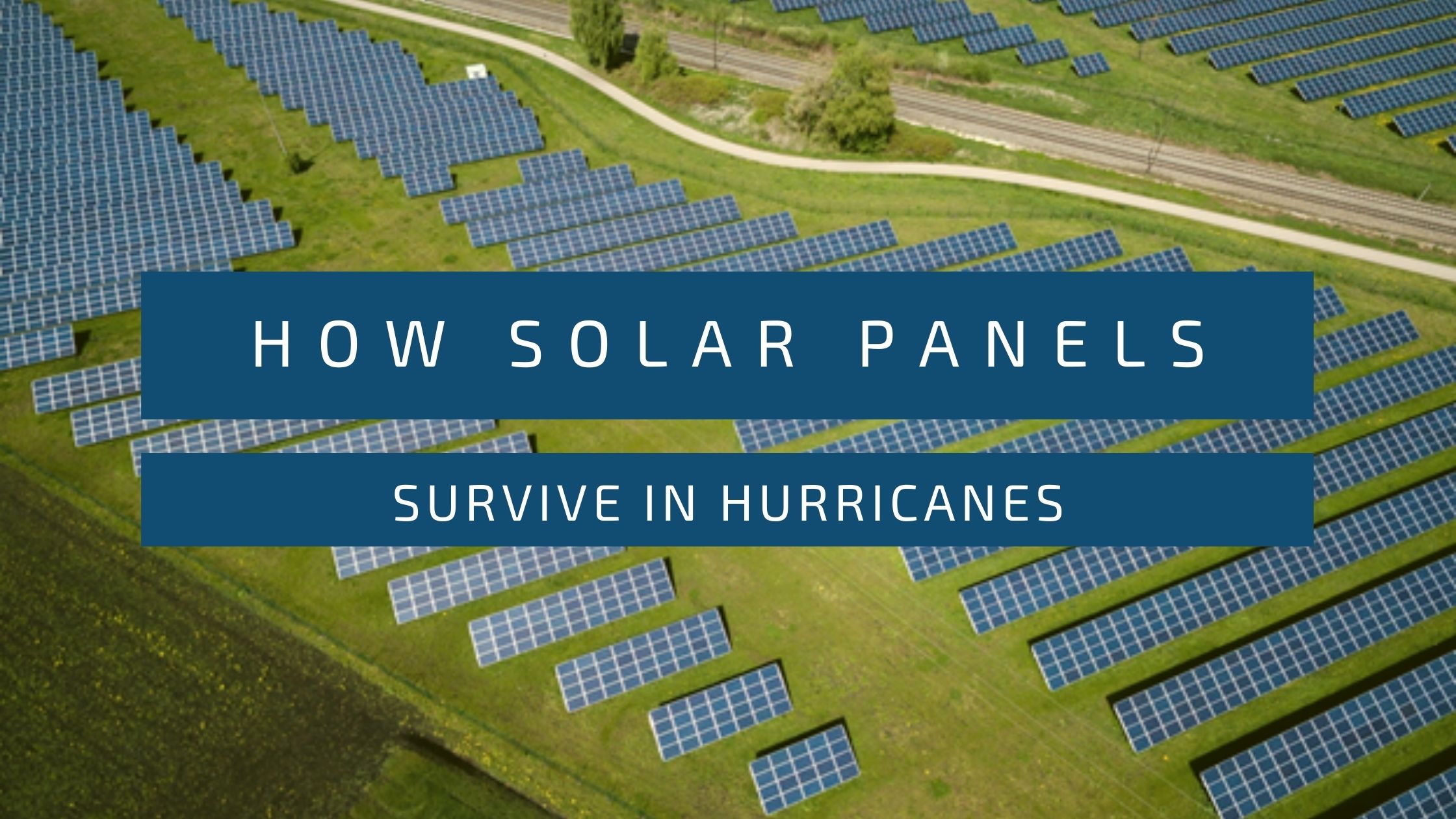


During natural disasters like hurricanes, you may find yourself second-guessing the durability of your outdoor equipment, from sheds to solar panels. But just how durable are these sources of renewable energy?
You may be surprised to learn that solar panels are quite resistant to heavy winds and storms. In some hurricane-prone areas, they must be built to withstand at least 160-mph winds, which should ensure their safety and yours in most natural disasters.
However, solar panels aren’t indestructible. They have their limits, especially when heavy-impact precipitation like hail is present. Nonetheless, solar panels remain one of the most resilient sources of energy during natural disasters.
If you’re anticipating a hurricane, there are several steps you can take to prepare your solar panels to endure the storm. Here, we’ll explore the reliability of solar panels during hurricanes and how you can prepare for hurricanes and similar natural disasters.
As mentioned, certain geographic areas require solar arrays to be built to withstand a certain level of wind. In Florida, this number is usually 160 mph, while in Texas it sits at 110 mph. The nationwide average is around 140. However, if you find yourself in the midst of a Category 5 hurricane, winds may exceed 160 mph, and your solar panels may be damaged.
Hail poses another challenge. Depending on the size and severity of hail, your solar panels run the risk of sustaining damage, but the odds of this occurring are comparatively small. One study conducted by the National Renewable Energy Laboratory (NREL) showed that less than 0.1% of solar panels installed within a four-year period were reported damaged.
What’s more, when a surprise hailstorm swept the NREL’s facilities in Golden, CO, only one panel of 3,000 was damaged. The same storm resulted in shattered car windows and roof dents elsewhere. As a general rule of thumb, solar panels these days are tested to withstand hail up to one inch in diameter, falling at a speed of around 50 mph.
Remember, solar panels are just like any other product: you get what you pay for. Some panels are extremely resistant to external forces, while others simply aren’t built to withstand the gale-force winds of a hurricane. You can find testing videos online for most solar panel providers, which should help give you an idea of how durable your panels are. If you’re in the market for solar energy in a hurricane-prone area, these simulations can help you decide which panels to install.
If you do find yourself in inclement weather during hurricane season, you may be struggling to discern the difference between a hurricane watch and a hurricane warning. A hurricane watch means hurricane conditions are possible, but a warning means you should expect such conditions. Even if you are only experiencing a watch, hail, wind, and rainstorms can still damage panels, so be cautious. Knowing the difference between a watch and a warning is essential, as it can help you more appropriately prepare for the threat at hand.
There are several different ways to get ready for a natural disaster, starting with the initial preparation. Even if no hurricane is on the horizon, it’s a good idea to invest in stand-alone solar power systems. An off-grid solar backup system allows you to survive off of stored-up solar power.
Solar lighting systems can also improve the energy security of your property. You can use solar lights during hurricanes for added visibility and security, or in the aftermath when implementing a post-disaster solution. The last thing you want to worry about during a natural disaster is loss of power. With solar lighting, you’ll have light even when your utility grid is dark.
Business owners face additional concerns during hurricane season, as they may risk losing their homes and livelihoods in one natural disaster. Their priority is to save lives and protect capital at all costs. To prepare your business for extreme weather, you can employ methods such as:
By having these procedures in place well before any natural disaster, you can help mitigate the risks a hurricane poses to your business. When you’re able to enact safety measures quickly and efficiently, you’ll be able to better cope with any post-storm damage as well.
Contrary to popular belief, solar panels are actually incredibly durable. While the cells themselves are thin and fragile, they’re protected by an incredibly sturdy glass and frame built to withstand most storms and natural disasters. Solar panels are also designed by manufacturers to resist the uplift of strong winds, protecting your roof and resources.
When you put in the appropriate time and effort to prepare for a hurricane, you ensure your solar panels will stick around to provide your property with continuous energy security, no matter the weather.
